
- Share via
I’ve been meandering around California for decades, which is how I came up with the 101 Best California Experiences, a.k.a. the California 101. But it’s a big state, there’s plenty of ground I haven’t covered and 2023 feels like a year to get out there.
Of course, I’ll be alert for new places too. But there are so many long-standing options for exploring, eating and sleeping that demand attention. Here are 18 adventures I’m hoping to cross off my list in the year ahead. You’ll find a lot of coastline here, several campgrounds and a trio of museums that debuted in 2022.

1. Hike to the West Point Inn, Mt. Tamalpais State Park
This is a historic, off-the-electrical-grid lodging that most guests can reach only by hiking or mountain-biking to the upper slopes of Mt. Tam. (There is ADA access too.) The West Point Inn was built in 1904 as part of a steam-train tourist attraction known as “the crookedest railroad in the world.” The railroad closed in 1930, and the Marin Municipal Water District ended up owning the property. Hikers keep the place busy. There are five cabins ($150 per night), seven guest rooms (which share one bath; $100 to $125 per night) and a kitchen that’s open only to overnight guests. It’s an hour’s hike from the Mountain Home Inn (a popular lunch spot), a two-hour hike from either Stinson Beach or Mill Valley.
2. Explore Hetch Hetchy
Hetch Hetchy is the valley in Yosemite National Park that San Francisco wanted to dam (to provide water for the city) and John Muir wanted to save. Muir and the Sierra Club lost and the O’Shaughnessy Dam went up in 1923, taming the Tuolumne River and flooding an area said to rival Yosemite Valley, 15 miles south, for beauty, drama, granite walls and waterfalls. The debate over whether to bring down the dam continues, now complicated by drought. But in the meantime, there’s still a lot to see along trails nearby. You can’t boat or swim in the reservoir (because 2.5 million Bay Area residents get drinking water from it), but there’s a five-mile round-trip hike along the shoreline to Wapama Falls that sounds perfect for spring. The Hetch Hetchy parking lot is a 40-mile drive from the Yosemite Valley Visit Center.
3. Comb the beach at Garrapata State Park
With Carmel just 10 miles north and Big Sur’s most famous landmarks just south, this dramatic set of cliffs and beaches doesn’t get the awe it deserves. At the southern end of the park’s coastline is a two-mile beach. I’d love half a day of exploration there at low tide, along with quality time prowling the clifftops with a camera. Soberanes Point, a view spot above rocky shores, is handy. (But remember that Garrapata is Spanish for “tick,” and there are many of those critters in the area.)
4. Wake up at Jalama Beach County Park
Sleep in a cabin or tent at Jalama Beach. I’ve made the trek here for burgers, but I’d like more than just a taste of this stop. It’s raw coast, with no cities for miles in either direction. The train tracks are one of the few reminders that civilization is near. Campsites are $30 to $50 per night. There are seven cabins, priced at $190 to $240 nightly.
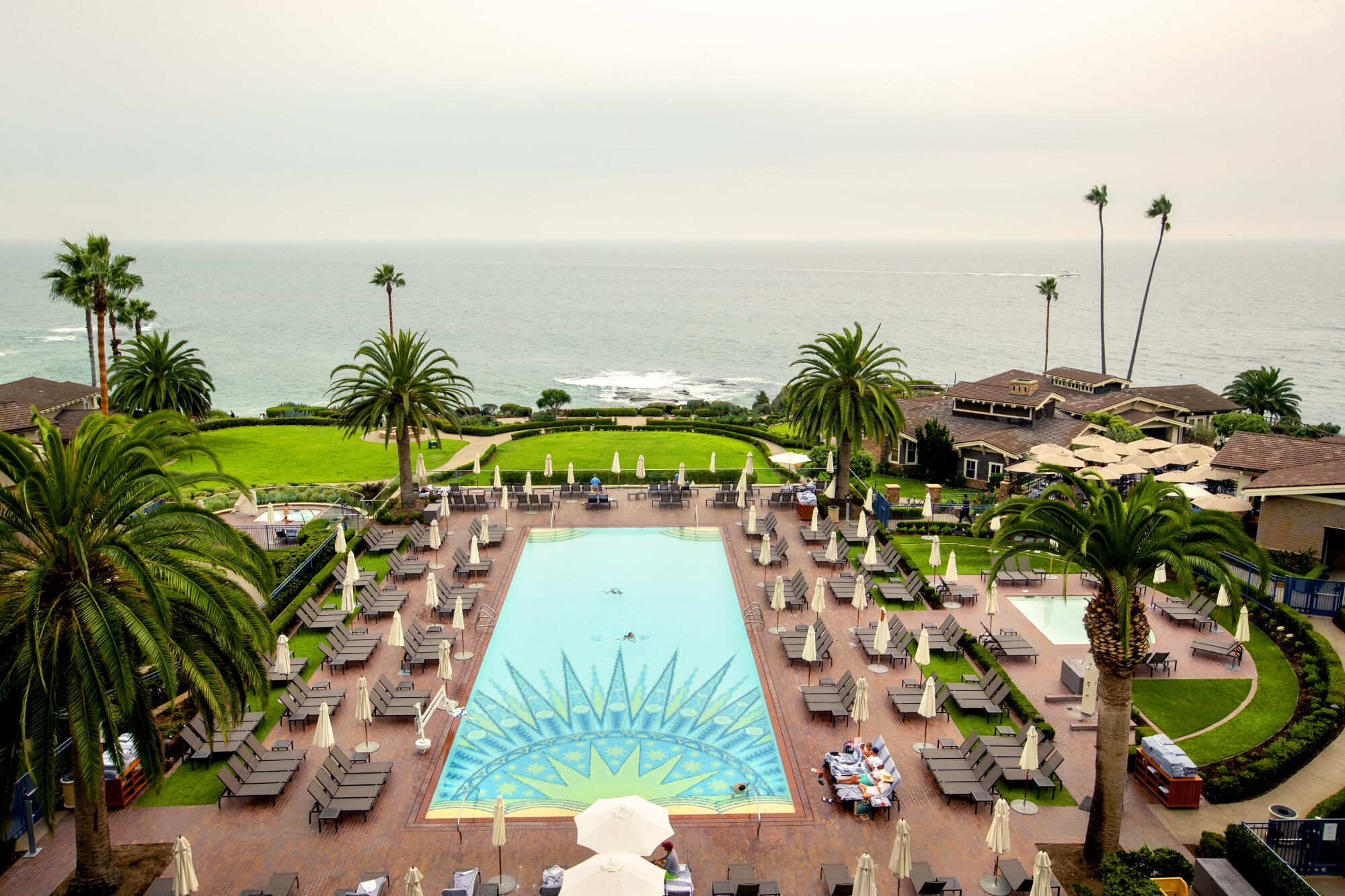
5. Dive into the pool at Montage Laguna Beach
Does it make me shallow to want to jump into this deep end? This is one of the most tempting swimming pools anywhere on the California coast, in part because of the surrounding Laguna shoreline, in part because of the pool’s hefty size, in part because of the cool sunburst design on the floor of the pool, which seems like it might be the solution to a secret medieval riddle. The only challenge here is money. There are no day passes to this Montage, and the last time I checked, the lowest room rate was $1,160 per night. (That gets you a king-size bed in a 500-square-foot room with a partial ocean view. To park overnight, it’s an additional $70.)
Does that make this the state’s priciest hotel? Oh, no. Many cost more. The priciest might be San Ysidro Ranch, a former citrus farm in Montecito with cottages spread across 550 acres and rates that start at $2,495 nightly. (It’s where JFK and Jackie Kennedy honeymooned.)
6. Hike (and maybe swim) Seven Falls Trail, Santa Barbara
I’m going to wait on this one until spring, preferably soon after some rain. This is a roughly three-mile round-trip journey that’s best undertaken with a swimsuit under your hike wear. It’s among the most popular routes in Santa Barbara. Until the rains of October, the creek bed was apparently bone-dry.
7. Dine at the Inn of the Seventh Ray, Topanga Canyon
For 30 years, I’ve been hearing about what a romantic and quintessentially California sort of place this is. The restaurant website reports that the food is “charged with the vibration of the violet flame of the Seventh Ray for perhaps your personal transportation to a higher plane.” To better grasp the context of those words, we are advised to check out the restaurant’s upstairs bookshop, the Spiral Staircase. It also helps to know that psychotherapists Ralph and Lucille Yaney opened the restaurant in 1975 (though its dominant culinary figures now are chef/co-owner Brad Miller and executive chef Gabriel Hatton). The inn is open for breakfast, lunch and dinner daily, beginning at 9 a.m. Some 90% of the seating is outdoors.

8. See the Cheech, Riverside
The Cheech Marin Center for Chicano Art & Culture, part of the Riverside Art Museum, is next door to the Mission Inn. It opened in June with hundreds of works drawn from the collection gathered by actor-comedian Cheech Marin over the last 30-plus years. The center, housed in a former library, is devoted to paintings, sculpture and photography that have sprung from Chicano culture.
9. Raise a tent at Kirby Cove Campground, Marin County
This is an odd little spot with just five campsites at the foot of a steep mile-long approach in the Marin Headlands, part of Golden Gate National Recreation Area. Yet those five campsites are in ultra-high demand, because they’re near the water’s edge with a view of the Golden Gate Bridge and San Francisco beyond. Maximum stay: three nights. (Earplugs recommended because of foghorns.) The campground, about 300 yards from the nearest parking spot, is open March 11 through Nov. 30. This month, Recreation.gov started taking reservations for stays beginning March 11. (Reservations are opened on a three-months-ahead rolling basis.)

10. Ogle OCMA
The Orange County Museum of Art, I mean. The museum’s long-awaited new building opened in October at the Segerstrom Center for the Arts, just east of South Coast Plaza in Costa Mesa. Inside, curators have gathered a bold collection of challenging contemporary art — in dramatic counterpoint to the surrounding neighborhood, which Times art critic Christopher Knight calls “a soulless cluster of car-friendly glass office buildings, stucco apartment blocks, hotels and another shopping center.”
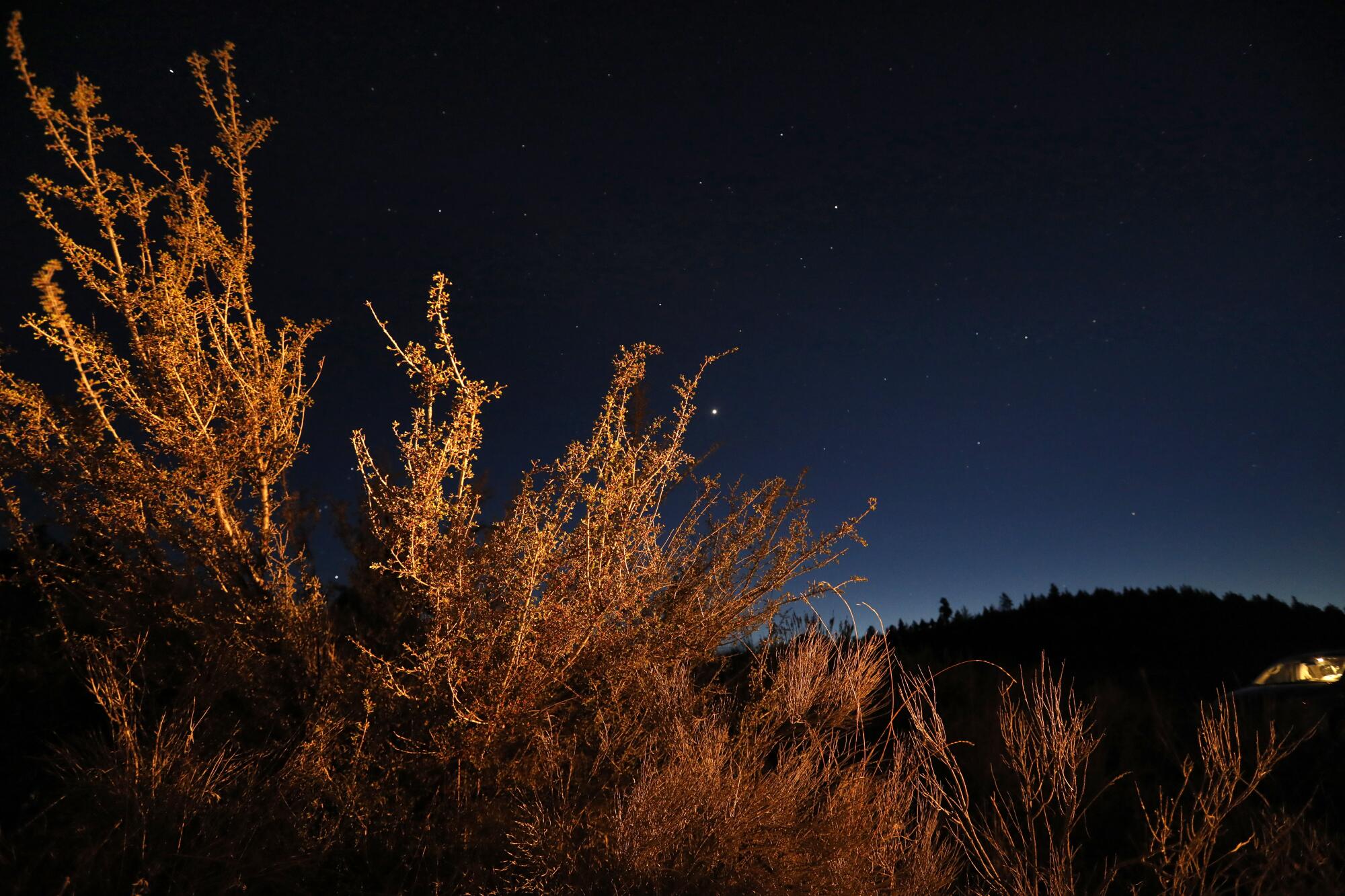
11. Step into lava — cold, hard old lava
I’m not talking about that volcanic action in Hawaii. I mean Lava Beds National Monument, which straddles Siskiyou and Modoc counties at the northeastern corner of California. It looks in pictures like an eerie underground wonderland, a landscape defined by the aftermath of eruptions hundreds of thousands of years ago. Parts of Lava Beds have been closed because of fire damage from 2021. But the most interesting parts are open, including many caves (and many bats). It has been set aside for preservation since 1925, but like me, most Californians have probably never come close to it. The monument is 150 miles northeast of Redding and 110 miles southeast of Medford, Ore.
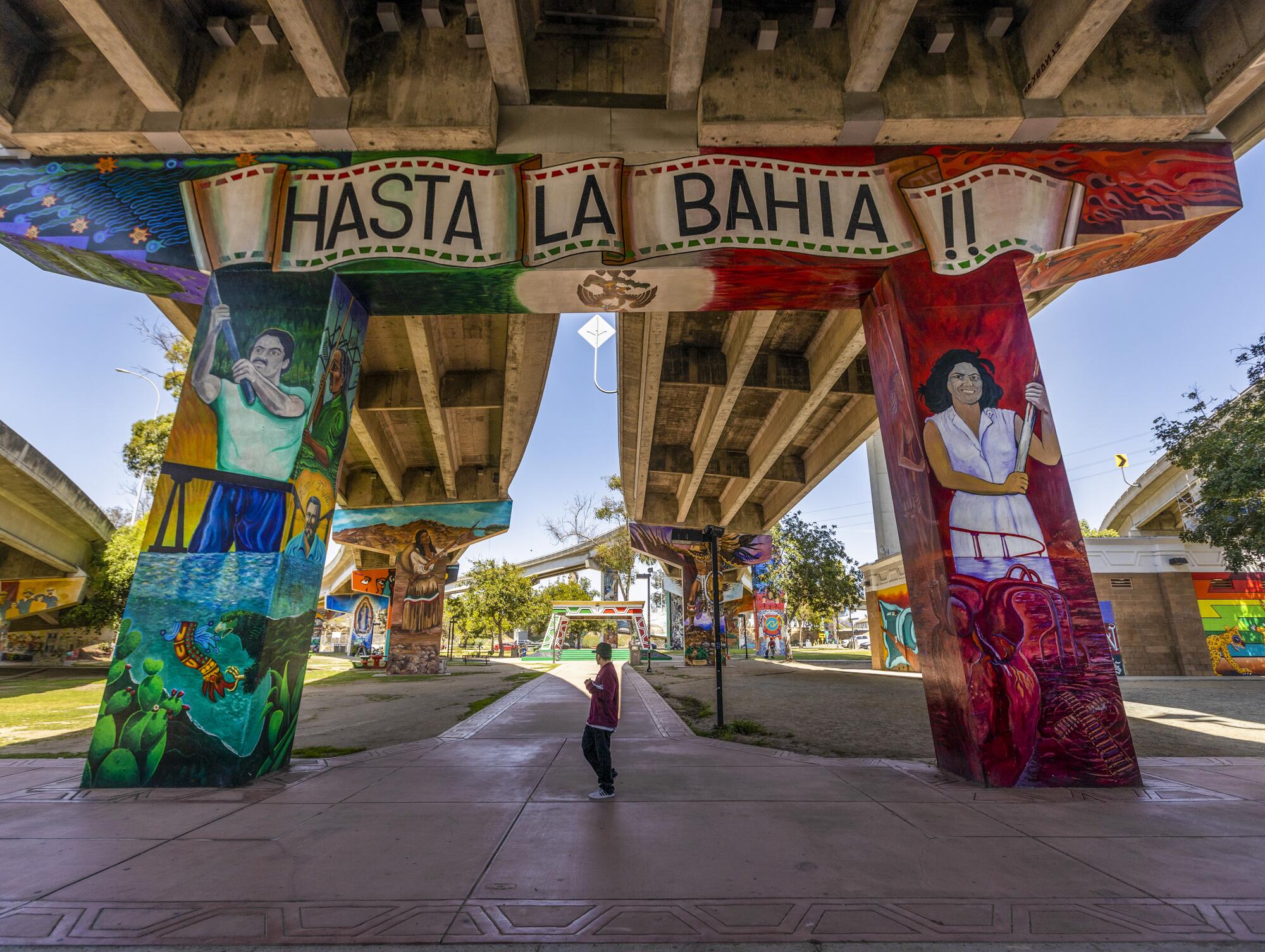
12. Study the story behind the murals in San Diego’s Chicano Park
This park, build around the mural-covered undercarriage of the Coronado Bridge, has been around for a while. But it was only in October that the Chicano Park Museum and Cultural Center opened on site. It’s open Fridays, Saturdays and Sunday, and its first exhibition reexamines the history of the park and the Logan Heights neighborhood.
13. Camp, hike or boat at Two Harbors on Catalina
Sometimes I slip into thinking that Avalon’s all there is to Catalina Island — a mistake. Avalon is where the ferry drops you off, where the big casino building is, where people putter around in golf carts. Catalina is a far bigger island. And Two Harbors seems like a fine place to be reminded of that. It’s 17 miles northwest of Avalon (and 22 miles from the mainland). It includes four campgrounds, tent rentals, cabins, the 12-room Banning House Lodge, two rental villas, a couple of restaurants, a general store and a dive shop. Around them you have Isthmus Cove, Catalina Harbor and half a mile of land in between them, the skinniest bit of the island. Besides camping, diving and boating, there’s kayaking, snorkeling, fishing and mountain biking
14. Explore Fannette Island by kayak
Fannette is the little island in Emerald Bay, the gorgeous inlet along Lake Tahoe’s southern shore. If you’ve ever stood at a vista point above on a sunny summer day, you’ve imagined yourself on that little island, which is the only island in Lake Tahoe. It includes a rugged stone “teahouse” structure that dates back about a century. To reach the island, you rent a kayak ($45 for two hours; first come, first serve) from Kayak Tahoe at Vikingholm, the 1929 mansion in Emerald Bay State Park. To reach the kayak place, you have to arrive early at the park (parking fills up) and walk down a steep, mile-long path that drops 400 feet to water’s edge. The paddle is about 1,000 feet, but winds on the water can be strong.
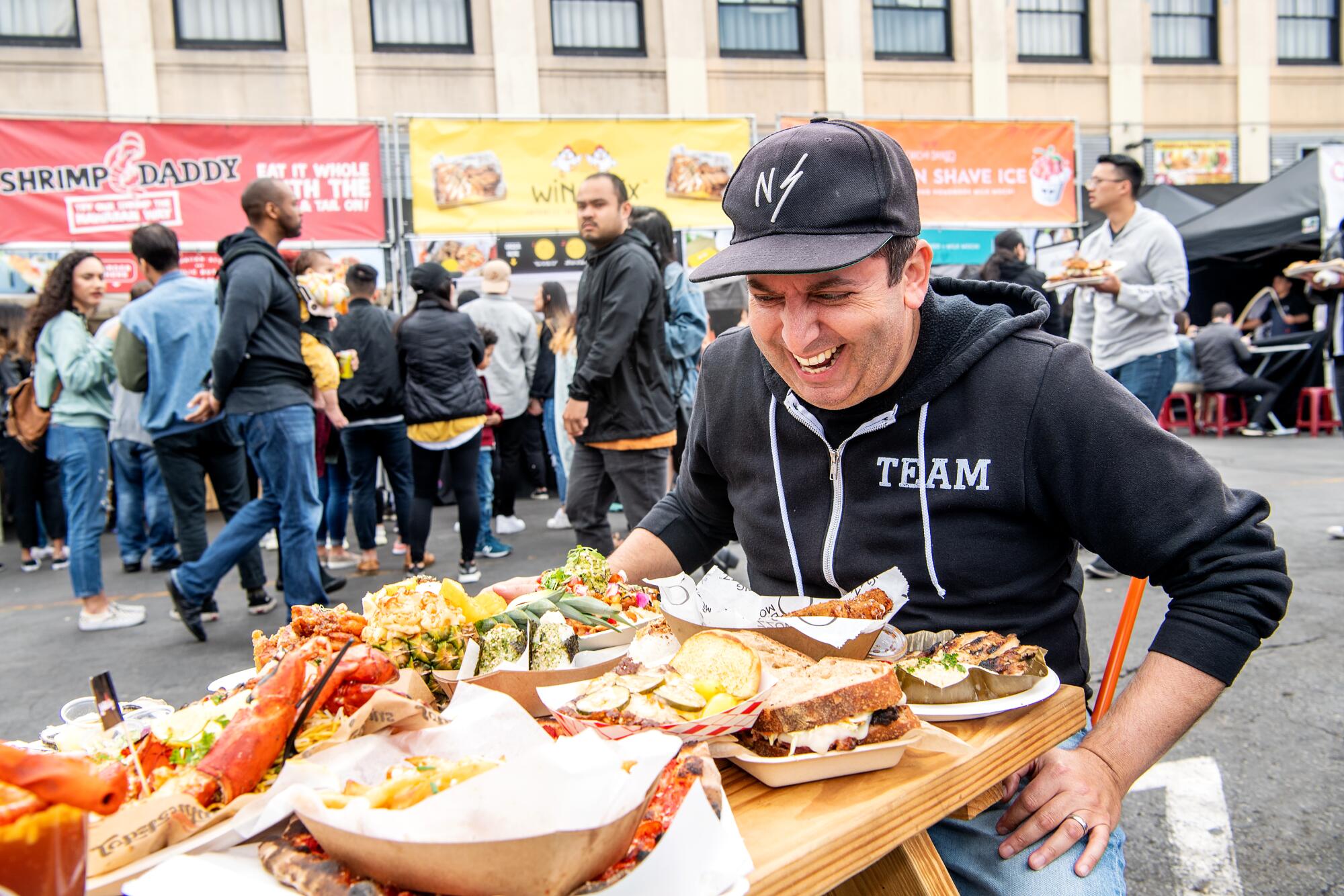
15. Taste Smorgasburg L.A.
This place is a mere five miles from my house, it’s open every Sunday (except Christmas), and it’s full of food trucks. Yet I’ve never been. Mea maxima culpa. That will change soon. Smorgasburg, open 10 a.m. to 4 p.m., is at Row LA at 777 S. Alameda St. in DTLA. It usually features more than 70 vendors of food, beverages, jewelry and other accessories. (No pets allowed.) There’s a beer garden, and the organizers run similar operations in Brooklyn, Miami, Toronto and beyond. On the third Sunday every month, Smorgasburg adds a “record fair” — an alley of vinyl vendors and other music retailers.
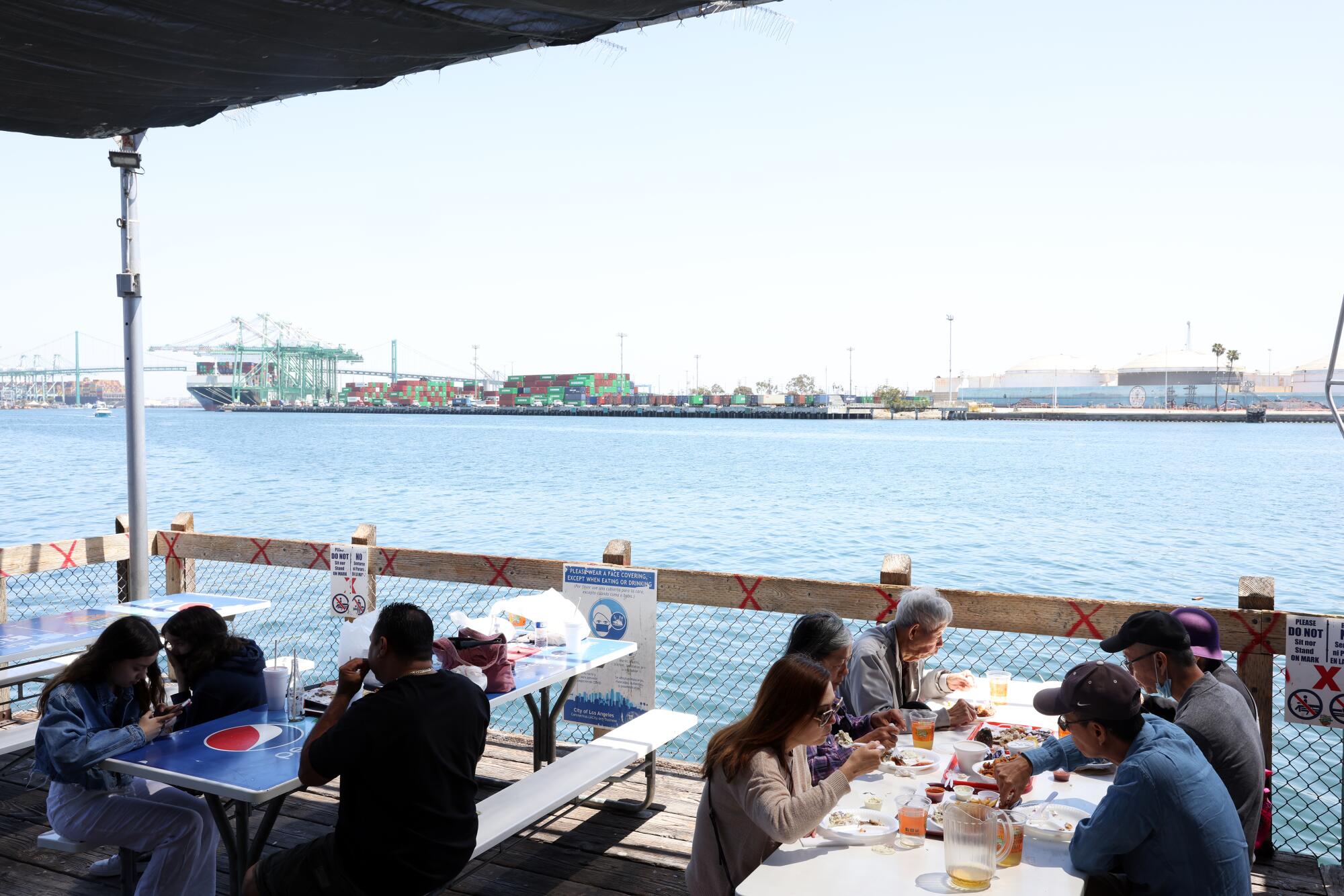
16. Catch something at the San Pedro Fish Market
It started in 1956 as a 200-square-foot shop and has grown into a 3,000-seat behemoth, surrounded by all the machinery and humanity — and shipping containers — of a hard-working waterfront. (The Fish Market also has several other locations, but San Pedro is the flagship.) The restaurant will cook up anything you buy from the scores of neighboring market stalls. And at some point — perhaps as soon as 2024 — it will be moving. As part of the West Harbor redevelopment project to replace the shut-down nearby Ports O’Call Village (now leveled), developers will take over the Fish Market’s current territory ,and Fish Market management plans to move to another waterfront location in San Pedro (about 1.5 miles north), where it can expand further.

17. Walk the Asilomar Coastal Trail
I’ve been hoping for years to walk this seaside trail, just north of Carmel and south of Pacific Grove. I’d combine it with a walk on Sunset Drive, which becomes Ocean View Boulevard in Pacific Grove. That route will take me past Lover’s Point Park and Lover’s Point Beach, a stretch of coastline as fetching as anything you might find in Laguna or La Jolla. Ideally, I’d spend a night at the Asilomar Conference Center, designed by Julia Morgan (who went on to do Hearst Castle) from 1913-28. I’ve glimpsed the rooms before — they’re rustic (no TV or phone) but look comfortable. Rates start around $210 nightly after facility fees and taxes. The conference center sits on 107 beach-adjacent acres. Asilomar State Beach looks out at Asilomar State Marine Reserve. The Monterey Aquarium is just 2 miles east.
18. Picnic in Presidio Tunnel Tops Park
Tunnel Tops, completed in July, is a 14-acre addition to San Francisco’s Presidio — which already was full of visit-worthy features. Built atop traffic tunnels, Tunnel Tops includes lawns, a 2-acre play area, murals, food trucks, a Golden Gate overlook, a cliff walk, picnic tables and grills. Elsewhere in the roughly 1,500 acres of the Presidio you’ll find the Walt Disney Family Museum; Fort Point (the historic building at the base of the Golden Gate Bridge); and Baker Beach (where Burning Man was conceived and brilliant bridge views are found).
More ways to shake up 2023
More to Read
Sign up for The Wild
We’ll help you find the best places to hike, bike and run, as well as the perfect silent spots for meditation and yoga.
You may occasionally receive promotional content from the Los Angeles Times.










